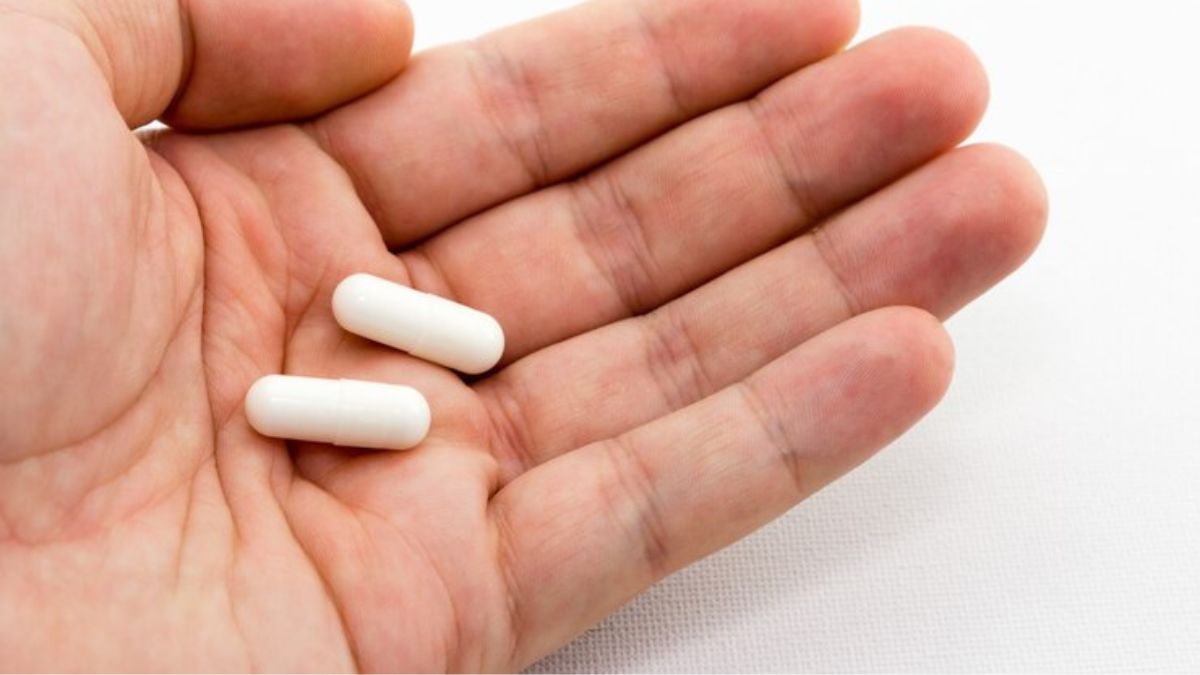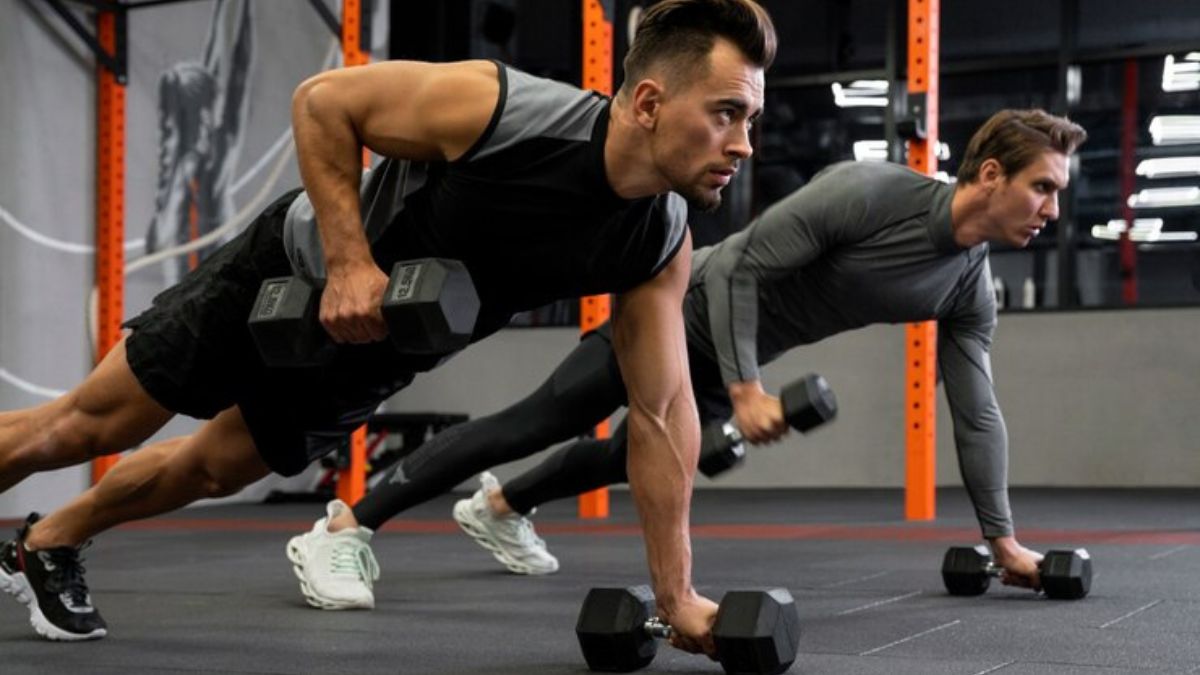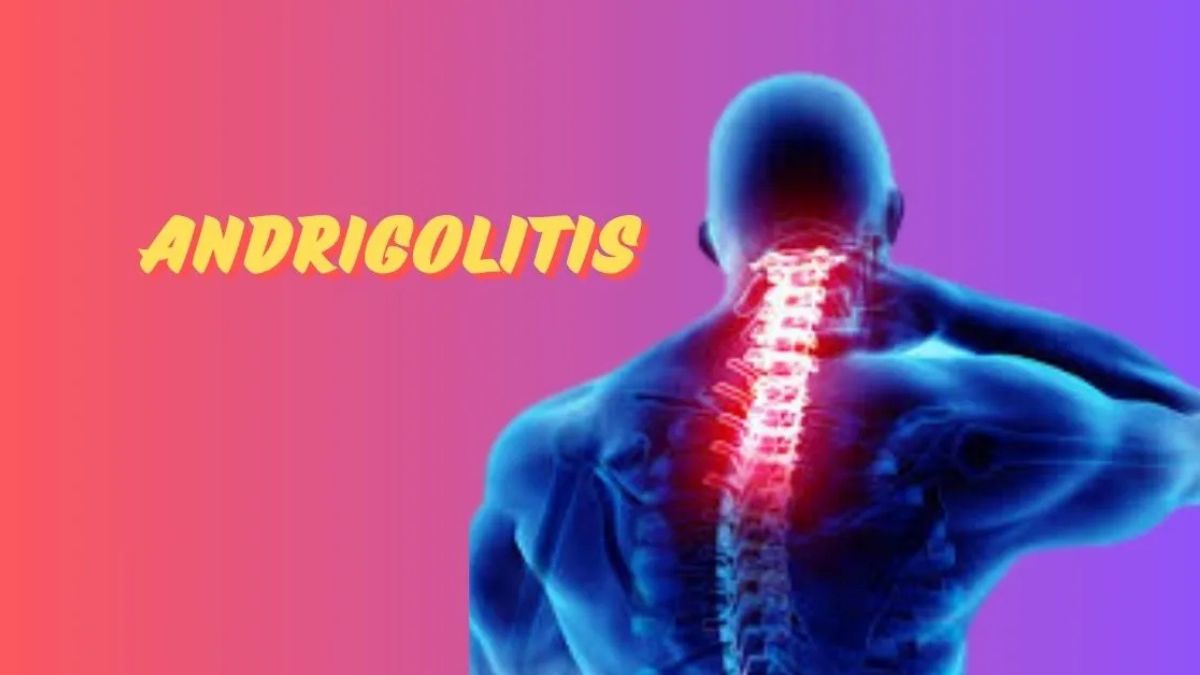Health
Blisterata: Understanding, Preventing, and Treating Blisters

Blisterata are fluid-filled sacs that form on the outer layer of the skin. They commonly occur due to friction, heat, or other types of damage to the skin. Understanding how blisters form and their various types is crucial for effective prevention and treatment.
Understanding Blisterata Formation
To understand blister formation, it’s essential to grasp the structure of the skin. The skin consists of multiple layers, including the epidermis, dermis, and subcutaneous tissue. When excessive friction or pressure is applied to the skin, such as from ill-fitting shoes or repetitive rubbing, the outer layer of the skin separates from the underlying layers, leading to the accumulation of fluid and the formation of a blister.
Types of Blisters
There are primarily two types of blisters: friction blisters and heat blisters. Friction blisters typically occur from repetitive rubbing or friction against the skin, while heat blisters, also known as burn blisters, result from exposure to extreme heat, such as flames or hot objects.
Factors Contributing to Blisterata
Several factors contribute to blister formation, including inappropriate footwear, excessive moisture, and repetitive motion. Wearing shoes that are too tight or loose can create friction, leading to blisters. Additionally, prolonged exposure to moisture, such as sweat or water, softens the skin and increases susceptibility to blistering. Engaging in activities that involve repetitive motion, such as running or hiking, can also cause friction and pressure points, resulting in blisters.
Prevention Techniques
Preventing blisters involves several strategies. Choosing appropriate footwear that fits well and provides adequate support is crucial. Additionally, managing moisture by wearing moisture-wicking socks and using foot powders can help reduce friction and prevent blister formation. Taking breaks during activities to rest and adjust footwear can also alleviate pressure on vulnerable areas.
Treatment Methods for Blisters
In the event of blister formation, various treatment methods can provide relief and promote healing. Home remedies such as applying a protective bandage or moleskin pad can help cushion the blister and prevent further irritation. It’s essential to avoid popping blisters whenever possible, as this can increase the risk of infection. If a blister is large, painful, or shows signs of infection, seeking medical attention is advisable. Healthcare professionals may drain the blister using sterile instruments and provide appropriate wound care to prevent complications.
How to Pop a Blister Safely
If it’s necessary to pop a blister, it’s essential to do so safely to minimize the risk of infection. First, clean the area and sterilize a needle or pin with rubbing alcohol. Gently puncture the edge of the blister and allow the fluid to drain. Avoid removing the skin covering the blister unless it’s already torn or damaged. Apply an antiseptic ointment and cover the blister with a sterile bandage to protect it as it heals.
When to Seek Medical Attention
While most blisters heal on their own with proper care, certain circumstances warrant medical attention. If a blister becomes increasingly painful, red, or swollen, or if it shows signs of infection such as pus or warmth, it’s important to seek medical help promptly. Individuals with diabetes or compromised immune systems should be especially vigilant about monitoring and treating blisters to prevent complications.
Complications of Untreated Blisters
Leaving blisters untreated can lead to various complications, including infection, scarring, and impaired mobility. Blisters that become infected may require antibiotics or other medical interventions to prevent further spread of the infection. Additionally, chronic blistering can cause thickened skin and increased susceptibility to future blister formation.
Blisterata in Specific Situations
Blisters can occur in various situations, each with its own unique considerations for prevention and treatment. Athletes and individuals engaged in sports or physical activities may be prone to sports-related blisters, which often result from repetitive friction or pressure. Blisters caused by burns or frostbite require specialized care to minimize tissue damage and promote healing.
Blisters in Children
Children are also susceptible to blisters, particularly on their feet due to prolonged walking or physical activity. Properly fitting shoes and socks can help prevent blisters in children, as can teaching them to recognize and address discomfort before blisters form.
Lifestyle Adjustments to Prevent blisterata
Making lifestyle adjustments can help reduce the risk of blister formation. This includes wearing appropriate footwear for specific activities, such as hiking boots for hiking or athletic shoes for running. Additionally, maintaining good foot hygiene and regularly inspecting the feet for any signs of irritation can help identify and address potential blister triggers early.
Products for Blister Prevention and Treatment
Numerous products are available for blister prevention and treatment, including moleskin pads, blister cushions, and lubricating balms. These products can help reduce friction, cushion pressure points, and promote healing for existing blisters. It’s essential to choose products suited to individual needs and preferences and to follow usage instructions carefully for optimal results.
Conclusion
Understanding the causes, prevention strategies, and treatment options for blisterata is essential for maintaining healthy skin and preventing discomfort and complications. By implementing proper footwear selection, moisture management techniques, and proactive blister care, individuals can minimize the risk of blister formation and promote optimal healing when blisters do occur.
FAQs
Q. Can I pop a blister if it’s painful?
While it may be tempting to pop a painful blister, it’s generally best to avoid doing so, as this can increase the risk of infection. If a blister is causing significant discomfort, consider covering it with a protective bandage and seeking medical advice if necessary.
Q. How long does it take for a blister to heal?
The healing time for a blister depends on various factors, including its size, location, and the individual’s overall health. In general, most blisters heal within one to two weeks with proper care and protection.
Q. Can wearing cotton socks prevent blisters?
Cotton socks can help absorb moisture and reduce friction, making them a suitable option for blister prevention. However, individuals may also consider moisture-wicking socks made from synthetic materials for enhanced moisture management during physical activity.
Q. Is it normal for blisters to itch as they heal?
Yes, it’s normal for blisters to itch as they heal. This is often a sign that the skin is regenerating and the healing process is progressing. Avoid scratching or picking at the blister to prevent further irritation or infection.
Q. Are there any natural remedies for treating blisterata?
Several natural remedies, such as aloe vera gel, tea tree oil, or calendula ointment, may help soothe and promote healing for blisters. However, it’s essential to use these remedies cautiously and discontinue use if any adverse reactions occur.
Health
How Vancouver Residents Are Adapting Wellness Trends for Stress Reduction

Vancouver, nestled between the Pacific Ocean and the Coast Mountains, is known for its vibrant culture, diverse community, and deep commitment to wellness. The city offers a beautiful blend of urban amenities and natural landscapes, encouraging a balanced and healthy lifestyle. In recent years, Vancouver’s residents have increasingly turned to wellness trends to combat the stress from hectic work schedules, social pressures, and the fast-paced nature of modern living.
- Embracing Nature for Mental Clarity
Vancouver is unique because residents have easy access to some of the world’s most stunning natural landscapes, which play a pivotal role in their stress-reduction practices. Whether it’s the expansive forests, the oceanfront beaches, or the picturesque mountains, Vancouver provides an ideal setting for reducing stress and finding inner peace.
Outdoor Activities
Vancouver’s residents take full advantage of the city’s natural surroundings by engaging in outdoor activities. From hiking in the iconic Grouse Mountain to exploring the rugged trails around Cypress Mountain, outdoor exercise is a vital part of the city’s wellness culture.
- Hiking: Popular trails on Grouse Mountain and Cypress Mountain offer stunning views and physical exercise.
- Biking & Running: Stanley Park, the Seawall, and other parks are prime spots for these outdoor activities.
- Benefits: Outdoor exercise lowers cortisol levels and enhances mental clarity.
Forest Bathing
A growing trend in Vancouver is Shinrin-yoku, or forest bathing, a Japanese practice that immerses oneself in the forest atmosphere. This activity, which typically involves leisurely walks through wooded areas, has been shown to lower blood pressure and reduce feelings of anxiety and stress. Vancouver’s many urban forests and surrounding nature reserves provide the perfect backdrop for this healing practice, making it easy for locals to engage in regular forest bathing to nurture their mental health.
Benefits: Known for reducing blood pressure, lowering stress levels, and promoting emotional healing.
Beach Therapy
Vancouverites flock to the city’s beaches for relaxation and rejuvenation. Whether it’s walking along the shore, practising yoga by the ocean, or simply sitting on the sand and watching the waves, the calming effects of the beach are undeniable. Studies have shown that spending time near the ocean, with its rhythmic sounds and vast views, can reduce stress and promote emotional well-being. Beaches like English Bay and Kitsilano are popular spots where locals unwind after a long day, practice mindfulness, and connect with nature.
2. Mindfulness and Meditation Practices
As stress levels increase in modern society, mindfulness and meditation have emerged as powerful tools for managing anxiety and stress. Vancouver residents are increasingly adopting these practices to help them stay grounded amidst the pressures of daily life.
Meditation in Daily Life
Many Vancouverites practice daily meditation to focus on their breath, release tension, and regain clarity. Apps like Calm, Headspace, and Insight Timer make it easy to meditate on the go, while guided meditations with mindfulness techniques are increasingly common in workplaces and schools to manage stress and improve focus.
- Flexible Meditation Apps: Allowing individuals to meditate anytime, whether at home, work, or on the move.
- Mindfulness in Workplaces and Schools: Guided meditations are being introduced to help manage stress and enhance focus in everyday environments.
Imagine a deeper sense of calm, where your body and mind sync effortlessly, guided by the natural potency of herbs. Combined with meditation, herbal concentrates unlock a new level of relaxation and mental clarity. Some residents are discovering the benefits of adding herbal concentrates, especially in Vancouver, to their wellness routines as these stress-reducing supplements gain momentum in the city.
Guided Yoga and Breathing Exercises
Yoga studios across Vancouver offer a variety of yoga styles designed to alleviate stress and improve overall mental health. Classes range from gentle restorative yoga, which emphasises relaxation, to more dynamic Vinyasa flows that also help to release tension. Many Vancouverites practice yoga both indoors and outdoors, often taking advantage of the beautiful parks and beaches.
- Restorative Yoga: Focuses on relaxation and mindfulness, allowing the body to release tension.
- Vinyasa Flow: A more dynamic style that combines breath and movement to help with tension release.
Additionally, breathing exercises like pranayama are becoming popular in both yoga classes and independent practice. Pranayama, which involves specific techniques to control the breath, helps lower stress, improve focus, and regulate the body’s physiological responses to stress.
- Pranayama Benefits: Reduces stress, enhances focus, and helps regulate physiological responses.
3. Adapting Holistic Therapies
Beyond traditional methods, Vancouver residents are increasingly turning to holistic therapies that combine both modern and ancient practices to address stress at its root. These therapies are growing in popularity due to their personalised nature and their ability to promote overall well-being.
Acupuncture for Stress Relief
It is one of Vancouver’s most popular holistic therapies for managing stress. This traditional Chinese medicine technique involves inserting fine needles into specific points on the body to help balance energy and promote healing.
- Reduce anxiety and depression
- Improve sleep quality
- Lower cortisol levels, aiding in stress reduction
- Improve circulation and enhance the body’s natural healing processes
Reiki and Energy Healing
It is another form of energy healing that has gained popularity in Vancouver. This Japanese technique focuses on channelling energy into the body to promote physical and emotional healing.
Reiki practitioners use their hands to transmit power to different parts of the body, helping clients release blockages and stress.
Benefits of Reiki:
- Alleviates emotional tension and promotes relaxation
- Restores balance to the body’s energy, enhancing overall well-being
What if you could enhance these practices further? By combining holistic therapies with wellness products like pain relief massage oils, you can unlock deeper relaxation and stress relief. These products complement therapies, providing a greater sense of calm and mental clarity.
Aromatherapy
Aromatherapy, the use of essential oils to promote emotional and physical health, is another popular method for managing stress. Essential oils like lavender, eucalyptus, and peppermint are frequently used in Vancouver’s wellness spaces, such as spas, yoga studios, and wellness centres. In addition, many people in Vancouver use essential oils in diffusers at home or in their cars to create a calming environment throughout their day.

4. Nutrition and Diet for Stress Management
Nutrition plays an essential role in managing stress. Vancouver residents are embracing diets rich in nutrients that can positively affect mood and reduce anxiety. Eating a balanced diet supporting brain health is a crucial part of managing stress levels.
Plant-Based Eating
Vancouver is known for its thriving plant-based food scene, with numerous restaurants and cafes offering vegan and vegetarian dishes. A plant-based diet rich in whole grains, leafy greens, legumes, and healthy fats is linked to lower stress levels.
- Studies show acupuncture can reduce anxiety, improve sleep, lower cortisol levels, and help manage depression.
- Many Vancouverites regularly visit licensed acupuncturists for targeted stress relief.
Adaptogens and Superfoods
Adaptogens are herbs and roots known for helping the body adapt to stress. Popular adaptogens such as ashwagandha, holy basil, and Rhodiola are increasingly included in smoothies, teas, and supplements. These herbs have been found to lower cortisol levels and support overall mental health. Similarly, superfoods like blueberries, chia seeds, and matcha are frequently added to diets in Vancouver for their antioxidant properties and ability to support energy and focus throughout the day.
5. Digital Detox and Tech-Free Zones
As technology continues to dominate daily life, Vancouver residents realize the importance of disconnecting from digital devices to reduce stress and improve mental well-being.
Tech-Free Retreats
Vancouver’s wellness scene includes digital detox retreats encouraging participants to unplug from technology in favor of more mindful and present experiences. These retreats often combine yoga, meditation, and nature immersion to foster relaxation and mental clarity, free from the distractions of smartphones and computers.
Minimalist Living
Minimalism, a lifestyle centred around decluttering and focusing on what truly matters, has been gaining traction in Vancouver. Residents are learning that a more straightforward, less cluttered living space can lead to a clearer mind and reduced stress. Many people are embracing the concept of reducing unnecessary possessions and commitments, which helps alleviate the pressure of living in a fast-paced, consumer-driven society.
6. Therapeutic Movement and Fitness
Physical activity is integral to stress management, and Vancouver residents are seeking more therapeutic forms of movement that combine fitness with relaxation.
Pilates and Tai Chi
Pilates and Tai Chi are gaining popularity as methods for managing stress while improving physical health. Both practices emphasize slow, deliberate movement, mindful breathing, and focus. Pilates, which strengthens the core and improves posture, is especially effective for releasing tension in the back and neck, common stress-related areas of discomfort. With its flowing, meditative movements, Tai Chi promotes relaxation and mental clarity.
Group Fitness with Purpose
In Vancouver, group fitness activities such as cycling, hiking, and dance classes are popular ways to alleviate stress while enjoying social connections. Studios and fitness clubs like Ride Cycle Club and Barre Fitness offer supportive environments where individuals can bond with others while exercising, creating a sense of community and shared wellness.
Conclusion
Vancouver is embracing various wellness trends that promote stress reduction and mental well-being. From outdoor activities that immerse individuals in the natural world to mindfulness practices and holistic therapies, residents prioritize wellness. The city’s residents blend ancient wisdom with modern techniques to foster a balanced lifestyle promoting overall health. Whether it’s through mindful movement, nutritious eating, or seeking tranquility in nature, Vancouverites are adopting wellness strategies that allow them to thrive despite the challenges of modern life. The city’s holistic approach to stress reduction is a testament to its commitment to mental health and well-being, providing a model for other cities to follow.
Health
Meet Entrenadora Fitness Marconfit: Your Guide to Sustainable Health and Wellness

Welcome to the vibrant world of Entrenadora Fitness Marconfit, where health and wellness intertwine seamlessly with sustainable living. If you’re on a quest for not just fitness, but a lifestyle that nourishes both body and soul, you’ve landed in the right place. With an infectious passion for promoting balance and mindfulness, Marconfit is here to guide you every step of the way.
Imagine transforming your approach to well-being—embracing workouts that energize rather than exhaust, meals that satisfy without guilt, and routines that fit into your life like puzzle pieces coming together harmoniously. This journey isn’t just about quick fixes; it’s about crafting a sustainable path toward better health that lasts a lifetime. Join us as we explore the philosophy behind Entrenadora Fitness Marconfit and discover how you can achieve lasting wellness while enjoying the ride!
The Journey to a Sustainable Lifestyle
Embarking on a journey to a sustainable lifestyle is more than just a trend; it’s an evolution. It begins with self-discovery and understanding your body’s unique needs.
Small changes can make significant impacts. Swapping processed foods for whole, nutrient-dense options is one step forward. It’s about making conscious choices that align with your values and health goals.
Incorporating eco-friendly practices also plays a crucial role. Simple acts like reducing plastic use or supporting local produce resonate deeply within the community.
Mindset shifts are equally important. Embracing patience can transform challenges into learning experiences rather than setbacks.
Finding joy in the process fosters resilience long-term. Celebrate each milestone, no matter how small, as part of this rewarding transformation toward sustainability.
You may like also:Cultural Perspectives on Dreams
The Philosophy of Entrenadora Fitness
Entrenadora Fitness Marconfit believes in a holistic approach to health. It’s not just about hitting the gym; it’s about nurturing your body and mind equally.
Her philosophy emphasizes self-love. Every person is unique, and so are their fitness journeys. Embracing that individuality helps foster genuine growth.
Marconfit also advocates for sustainability. Quick fixes may offer temporary results but can lead to burnout. Instead, she promotes long-lasting habits that fit seamlessly into daily life.
Mindfulness plays a key role as well. Being aware of what you eat and how you move leads to better choices naturally.
Entrenadora Fitness is about creating a lifestyle where wellness feels effortless rather than forced. This mindset transforms struggles into enjoyable challenges on the path to vibrant living.
The Importance of Mindful Eating
Mindful eating is a powerful practice that encourages awareness of your food choices. It’s about slowing down and truly savoring each bite. This shift in focus helps you connect with what you’re consuming.
When you eat mindfully, you pay attention to the flavors, textures, and aromas of your meal. This enhances your sensory experience and fosters appreciation for nutritious foods.
Moreover, mindful eating can lead to better digestion. Taking time to chew properly signals your body when it’s full. This may help prevent overeating—a common pitfall in our fast-paced lives.
Incorporating this practice into daily routines doesn’t require drastic changes; simply setting aside distractions during meals can make a difference. By being present at mealtime, you’re more likely to choose healthier options and enjoy them fully.
Finding Balance in Exercise
Finding balance in exercise is crucial for long-term success. It’s not just about hitting the gym hard every day; it’s about listening to your body and understanding its needs.
Incorporating variety into your routine can help maintain motivation. Mix cardio, strength training, and flexibility exercises to keep things fresh. This diversity also reduces the risk of injury.
Moreover, scheduling rest days is vital. These breaks allow muscles to recover and grow stronger. Remember, progress doesn’t happen overnight.
Mindset matters too. Focus on how exercise makes you feel rather than solely on physical appearance. Celebrate small victories along the way—they contribute significantly to overall well-being.
Find an activity you love! Whether it’s dancing or hiking, enjoying what you do ensures that fitness becomes a sustainable part of your lifestyle instead of a chore.
Tips for Maintaining a Sustainable Health and Wellness Routine
Creating a sustainable health and wellness routine starts with setting realistic goals. Focus on small, achievable targets that keep you motivated without overwhelming yourself.
Incorporate variety into your workouts to prevent boredom. Explore different activities like yoga, cycling, or group classes to find what resonates with you. This keeps things fresh and enjoyable.
Mindful eating is crucial for long-term success. Pay attention to hunger cues and savor each bite. Choose whole foods over processed ones whenever possible.
Don’t forget the importance of rest days in your routine! Allowing your body time to recover helps maintain energy levels and prevents burnout.
Stay connected with a supportive community or find an accountability partner who shares similar goals; this makes it easier to stay committed alongside someone else’s encouragement.
Q&A with Marconfit
Curious minds often seek guidance, and Marconfit is here to help. In our recent chat, she shared her insights on sustainable health.
When asked about the biggest obstacle in fitness journeys, Marconfit emphasized mindset. “Believe in your potential,” she advised. “Self-doubt can be the greatest barrier.”
Nutrition also came up. She encourages a focus on whole foods rather than restrictive diets. “Food should nourish you, not feel like punishment,” she noted passionately.
Participants were eager to know how to stay motivated during challenging times. Her answer was simple: set small goals and celebrate each win.
Marconfit’s approachable nature makes her wisdom accessible for everyone—from beginners to seasoned athletes seeking a refresh.
This dialogue highlights that wellness isn’t merely physical; it’s deeply personal too. Engaging with such an inspiring figure can ignite passion within anyone ready for change.
Conclusion:
Embracing a sustainable health and wellness journey is an empowering experience. With Entrenadora Fitness Marconfit, you’re not just adopting a routine; you’re transforming your lifestyle.
This approach fosters resilience. It encourages you to listen to your body and honor its needs while striving for balance in all aspects of life.
As you navigate this path, remember that it’s about progress, not perfection. The small changes can lead to significant results over time.
Engaging with the community around Marconfit enriches the experience further. Sharing stories and tips builds motivation and accountability among peers.
Sustainability in wellness means finding joy in the process rather than focusing solely on outcomes. It’s about crafting a healthier future that feels right for you.
FAQ’s:
1. What services does Entrenadora Fitness Marconfit offer?
– Marconfit provides personalized coaching sessions focused on nutrition, exercise plans, and lifestyle adjustments.
2. How do I get started with my sustainable health journey?
– Begin by scheduling an initial consultation with Marconfit where you’ll discuss your goals and create a tailored plan.
3. Is the program suitable for all fitness levels?
– Yes! The methods used by Entrenadora Fitness Marconfit are adaptable to beginners as well as seasoned athletes.
4. Can I expect quick results?
– While immediate changes can occur with dedication, sustainable results take time; focusing on gradual improvements is key.
5. How important is nutrition in this program?
– Nutrition plays a fundamental role; mindful eating enhances overall health and complements physical activity for better outcomes.
6. Are there any group classes available through Entrenadora Fitness Marconfit?
– Yes! Group classes foster community support while providing motivation from fellow participants under professional guidance.
7. What makes Entrenadora Fitness different from other programs?
– The emphasis on sustainability ensures long-term success rather than temporary fixes—a holistic approach sets it apart.
Health
Andrigolitis Explained: What You Need to Know for Better Health

Andrigolitis might be a term you’re unfamiliar with, but understanding it is crucial for your health. This condition can impact various aspects of well-being, and recognizing its signs early can lead to more effective management. Whether you’ve been experiencing unusual symptoms or just wish to boost your health knowledge, diving into the world of Andrigolitis will equip you with valuable insights. Let’s unravel what this condition means and how it affects many individuals—perhaps even yourself! Stay tuned as we explore symptoms, causes, treatment options, and practical lifestyle changes that could make all the difference in enhancing your overall health.
Symptoms and Causes of Andrigolitis
Andrigolitis presents a variety of symptoms that can significantly impact daily life. Many individuals experience discomfort in the affected areas, often described as aching or sharp pain. Swelling and tenderness are also common, making movement difficult at times.
Fatigue is another prevalent symptom. This feeling can be overwhelming, leaving those affected drained even after minimal exertion. Some may notice changes in appetite or sleep disturbances due to persistent discomfort.
The causes of Andrigolitis vary widely. Infections are a primary trigger, with bacterial or viral agents leading to inflammation. Autoimmune disorders may also play a role, where the body mistakenly attacks healthy tissues.
Genetic factors cannot be overlooked either; they influence susceptibility to this condition. Environmental elements such as stress and poor diet contribute further to its onset and severity, creating a complex interplay that requires careful consideration for effective management.
You may like also:Essential Guide to Nissan K24 Propane Carburetor Parts: What You Need to Know
Diagnosis and Treatment Options
Diagnosing Andrigolitis typically starts with a thorough medical history and physical examination. A healthcare provider may look for specific symptoms, such as inflammation or swelling in the affected areas.
Diagnostic imaging, like X-rays or MRIs, can help visualize the extent of any internal issues. Sometimes, blood tests are necessary to rule out other conditions that might mimic Andrigolitis.
When it comes to treatment options, they often depend on severity. Mild cases may respond well to rest and over-the-counter pain relief medications like ibuprofen or acetaminophen.
For more severe instances, corticosteroids might be prescribed to reduce inflammation. Physical therapy can also play a crucial role in rehabilitation and recovery.
In some cases where traditional treatments fail, surgical intervention could become an option if structural abnormalities are present. Working closely with your healthcare team ensures you receive personalized care tailored to your needs.
Prevention Tips for Andrigolitis
Preventing Andrigolitis involves simple lifestyle adjustments that can have a significant impact. Start by maintaining good hygiene practices. Regular handwashing helps reduce the risk of infections linked to this condition.
Incorporate a balanced diet rich in vitamins and minerals. Foods high in antioxidants, like fruits and vegetables, support immune function and overall health.
Stay hydrated throughout the day. Drinking plenty of water aids bodily functions and can help mitigate inflammation associated with Andrigolitis.
Regular exercise is also beneficial. Aim for at least 30 minutes of moderate activity most days of the week to boost your immune system.
Managing stress plays a vital role in prevention. Engage in relaxation techniques such as yoga or meditation to keep stress levels low, promoting better health outcomes related to Andrigolitis.
The Connection Between Andrigolitis and Other Health Conditions
Andrigolitis often exists alongside other health conditions, creating a complex web of symptoms and challenges. One notable connection is with autoimmune disorders. The immune system’s erratic behavior can exacerbate inflammation in the body, potentially increasing the severity of Andrigolitis.
Similarly, stress-related illnesses may influence its onset or progression. Chronic stress negatively impacts overall well-being, making individuals more susceptible to various ailments, including Andrigolitis.
Metabolic syndromes also show a significant correlation. Conditions like obesity and diabetes can lead to hormonal imbalances that heighten inflammation levels.
Moreover, digestive disorders might play a role as well. An unhealthy gut can contribute to systemic issues that affect multiple bodily functions, further complicating Andrigolitis symptoms.
Understanding these connections allows for better management strategies tailored to individual health needs. It highlights the importance of treating not just one condition but addressing interconnected health factors comprehensively.
Lifestyle Changes to Improve Andrigolitis
Making small changes to your lifestyle can have a significant impact on managing Andrigolitis. Start by incorporating more fruits and vegetables into your diet. These foods are rich in vitamins and antioxidants, which support overall health.
Regular physical activity also plays a crucial role. Aim for at least 30 minutes of moderate exercise most days of the week. This helps improve circulation and reduce inflammation.
Hydration is essential too. Drinking plenty of water keeps your body functioning optimally and can alleviate some symptoms associated with Andrigolitis.
Prioritizing sleep is vital as well. Quality rest helps the body repair itself and manage stress levels effectively.
Consider mindfulness practices like meditation or yoga to help reduce stress, which is known to exacerbate many health conditions including Andrigolitis. Making these adjustments can create a positive ripple effect on your wellbeing.
Conclusion:
Understanding Andrigolitis is crucial for maintaining your overall health. Recognizing the symptoms early can make a significant difference in management and recovery.
Staying informed empowers you to seek timely medical advice. Always consult healthcare professionals for accurate diagnosis and personalized treatment options.
Adopting preventive measures can greatly reduce the risk of developing this condition. Simple lifestyle changes often lead to substantial improvements.
Prioritizing your health will contribute positively not only to your well-being but also enhance your quality of life. Awareness and proactive steps are key components in managing Andrigolitis effectively.
Always stay engaged with reliable sources and maintain open communication with your healthcare team. Your journey towards better health starts here, armed with knowledge about Andrigolitis.
FAQ’s:
Andrigolitis is a condition that deserves attention. Understanding its nuances can lead to better health outcomes for those affected. As we explore frequently asked questions, you’ll gain insights into this often-overlooked ailment.
What is Andrigolitis?
Andrigolitis refers to inflammation in the body’s systems, leading to various symptoms and discomforts. More research continues to shed light on this condition.
What are the common symptoms of Andrigolitis?
Symptoms may vary but commonly include fatigue, pain in specific areas, and occasional swelling. Recognizing these early signs can be crucial for timely intervention.
How is Andrigolitis diagnosed?
Diagnosis typically involves a combination of physical examinations and advanced imaging techniques. A healthcare professional will consider your medical history during this evaluation process.
What treatment options are available for Andrigolitis?
Treatment varies based on severity and underlying causes but often includes medication, lifestyle changes, or physical therapy tailored to individual needs.
Can I prevent Andrigolitis from developing?
While not all cases are preventable, adopting healthy habits—like regular exercise and maintaining a balanced diet—can significantly reduce risks.
Is there any connection between Andrigolitis and other health conditions?
Research suggests that individuals with certain autoimmune disorders may experience higher incidences of Andrigolitis due to overlapping inflammatory responses within the body.
Are there lifestyle changes that can improve my condition if I have Andrigolitis?
Yes! Incorporating stress management techniques such as yoga or meditation along with consistent physical activity can enhance well-being greatly while managing symptoms effectively.
If you have more questions about Andrigolitis or need personalized advice regarding your situation, consulting with a healthcare professional is always advisable.
-

 Entertainment9 months ago
Entertainment9 months agoUnveiling the World of HDToday
-

 Entertainment9 months ago
Entertainment9 months agoWWE Raw S31E19: A Rollercoaster of Emotions
-

 Technology9 months ago
Technology9 months agoUnlocking the Mystery of QXEFV
-

 Health9 months ago
Health9 months agoExploring the Benefits of wellhealthorganic Home Remedies
-

 Business9 months ago
Business9 months agoUnlocking Opportunities with GovDeals – Liquidity Services Marketplace
-

 Topic9 months ago
Topic9 months agoHüriyer: Unveiling the Essence of Human Freedom
-

 Technology8 months ago
Technology8 months agoAmazons GPT-55X: Revolutionizing Language Models
-

 Health9 months ago
Health9 months agoIlluminate Your Scans: Unveiling the Magic of Luminous Scans in Modern Imaging


